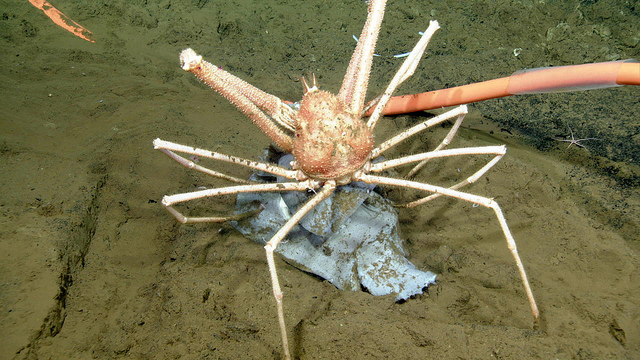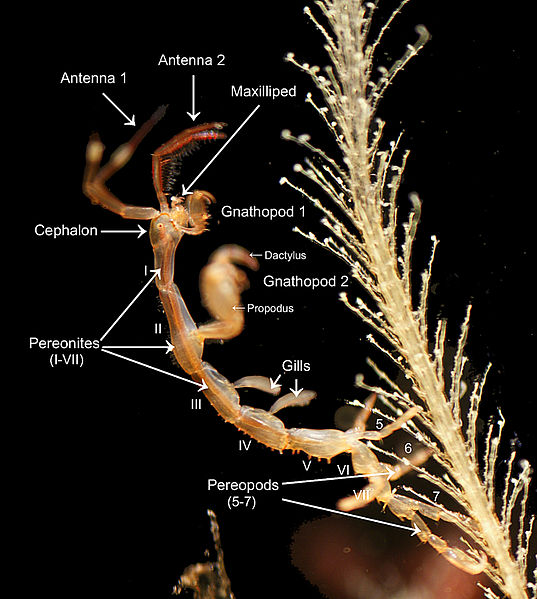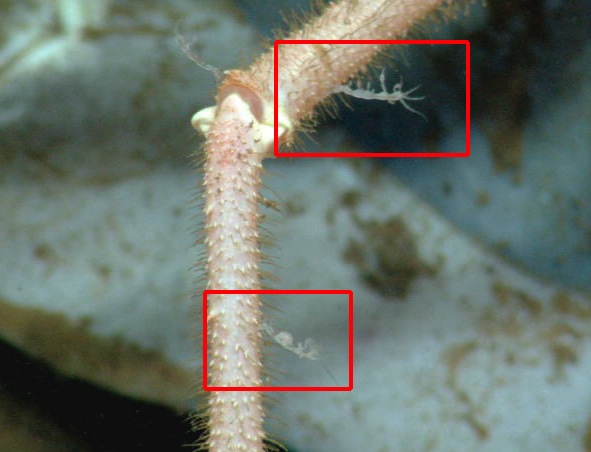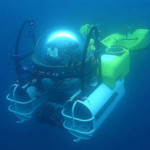
Neptune Canada, the world’s first regional-scale underwater ocean observatory network that plugs directly into the Internet, has an excellent Flickr photostream of deep-sea beasties.
A close up on the legs on the crab above reveals something amazing.

Do you see it? Let me help.
What you see attached to the legs of the crab are skeleton or ghosts shrimps (there is actually a three, the third is just left of the upper red box). Ghost shrimps are not actually shrimps (in a group we call the Caridea) but rather in a group called the Caprellidae. In fact they are not even in the same order (Decapoda vs. Amphipoda). Caprellids are only found in the oceans and have a special pair of appendages for attaching to things like kelp, seagrass, small children swimming, or crab’s legs. Although a few species filter feed particles out of the water. Some are sit and wait predators patiently awaiting for another animal or really small child to get too close. THEN BAM! A SMALL INVERTEBRATES MEETS ITS MAKER!

blah







Wow!! Amazing pictures. Never thought of learning so much from crab legs. What is the age of this crab? The second picture looks broken or is it just men..Was the crab hurt in anyway?
We get hundreds of these little guys on the ropes of our offshore acoustic stations. Sometimes they bite hard enough that you can actually feel them.
I really enjoy all the articles on this site.